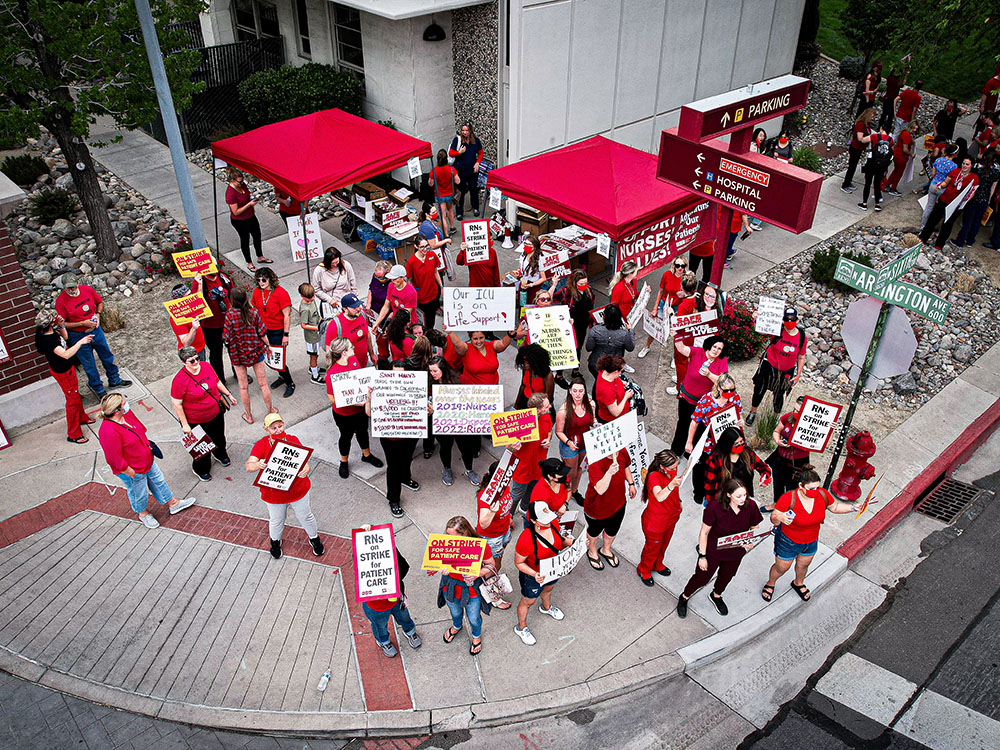
This Striketober is a product of the pandemic, when workers began rethinking the role of work in their lives and what they were willing to sacrifice for a steady paycheck. It’s not the most militant labor activism in our nation’s history – workers in the 1930s took over factories and died in battles with private security hired by employers. But it’s the most activity I’ve seen in my lifetime and signals a resurgence of a labor movement, especially among younger workers.
This strike wave began in Southern California with unions that don’t immediately come to mind when one thinks of “Labor.” But Southern California unions have been quietly building power for decades, organizing new members (think the “Justice for Janitors” campaign of the 1990s that inspired the movie “Bread and Roses”), getting union leaders elected to office, and generally laying the groundwork for their muscle flexing we’re seeing now. Those unions to strike this year have included hotel workers, teachers and school support staff, city employees, and, of course, the Hollywood guilds.
Now, the strikes and threatened strikes have spread to unions more commonly associated with big strikes and images of union members in our nation’s heartland—the United Auto Workers and Teamsters. In some ways, the timing of this year’s strikes was simply coincidental, as the union contracts happened to expire around the same time. What’s not coincidental is workers’ willingness to strike, inspired by the increased cost of living, record corporate profits, and workers’ greater bargaining power because of low unemployment and high demand for workers. Workers are now more ready to strike than they have been in recent decades. In addition, younger and more activist leaders are taking over unions including at both the UAW and Teamsters. Perhaps most importantly, public support for unions is at a 58-year high, with Gen Z’ers the most supportive. And those young workers are leading new union organizing at places like REI, Trader Joe’s, Starbucks, Apple, Amazon, and many online media outlets.
The landscape of organized labor is certainly changing. The long-term trajectory of unions is downward, however. U.S. union membership is at its lowest point since the 1950s. Right now, only about 10% of U.S. workers have a union, and only 6% of private sector workers have one. Many in the labor movement blame labor laws that favor employers and make it difficult for workers to organize unions.
But this year is remarkable because of the number and varied types of workers who are in solidarity with each other and inspire each other. I’ll often drive by picket lines with signs from the actors’, writers’, and hotel workers’ unions all mixed together. We may not be on the verge of a general strike, but more workers supporting each other means that they’re thinking beyond their own workplaces and about broader notions of worker power. This is how Hollywood writers’ and actors’ strikes may have helped convince Michigan autoworkers that it’s worth striking.
Federal labor law, despite its perceived weakness, protects workers who want to act together to improve working conditions or form a union. That can be something as simple as having a conversation with just one other coworker and saying, “Hey look, this thing needs to change. It's too hot in my workplace. We're not making enough money to live here. I'm not getting the sick leave that I need.” That is protected by the law, and employers cannot retaliate against this activity. In fact, Congress explicitly passed the National Labor Relations Act (NLRA) to support union organizing, with the idea that it would help calm worker unrest and prevent the economy from going off the rails. The National Labor Relations Board, the body that enforces the NLRA, is now more pro-worker than at any point in the past several decades and just issued a slew of pro-union decisions making it easier to organize.
Striketober will likely continue later into the fall and beyond. The writers have settled their strike but, in both the acting and auto industries, the differences between the parties are still deep, especially around issues of job security and wages. Other potential strikes are on the horizon, as well, making for an exciting next few years.
Jonathan F. Harris is an associate professor at LMU Loyola Law School. He is also a senior fellow with the Student Borrow Protection Center and a grantee of the University of California Student Loan Law Initiative.